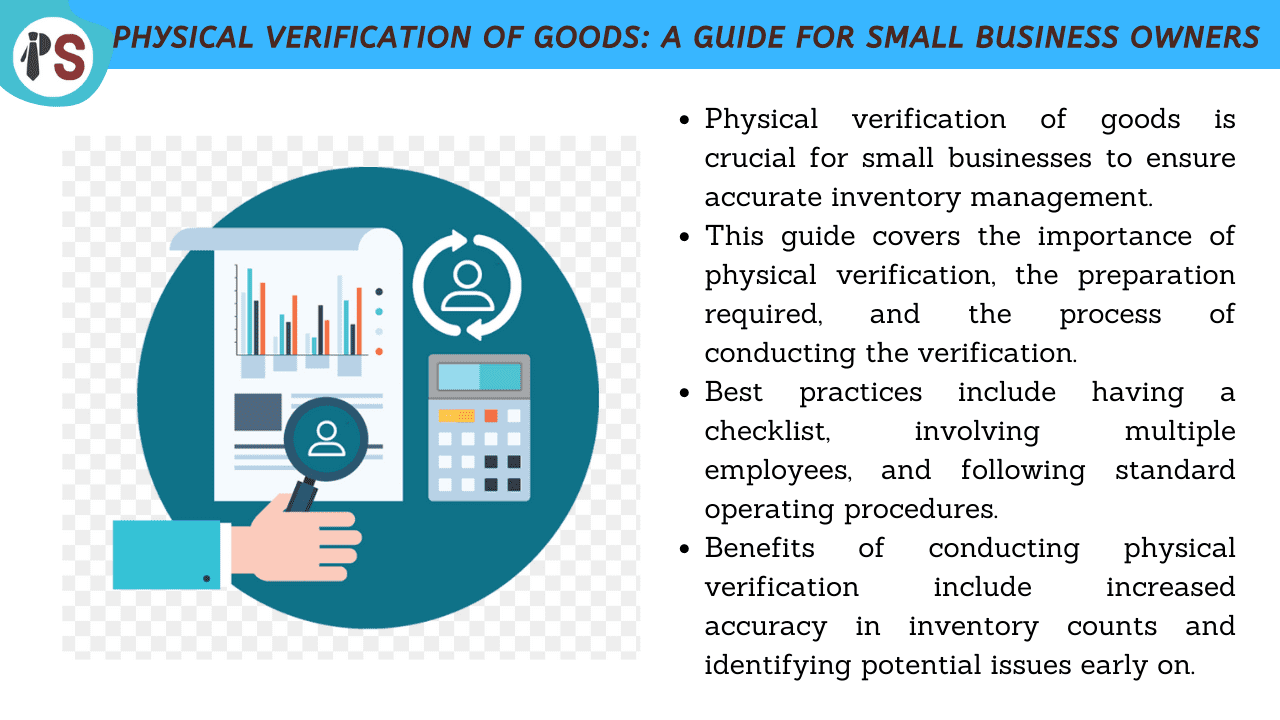
Physical verification of goods is an essential aspect of inventory management for small business owners. It is the process of physically counting and verifying the quantity and quality of goods on hand, ensuring that the recorded inventory matches the actual physical inventory. Physical verification helps identify discrepancies between actual stock and recorded stock, which can arise due to errors in recording or theft. This guide provides small business owners with a step-by-step process for conducting physical verification of goods.
Plan and Schedule the Physical Verification
The first step in physical verification is planning and scheduling the process. This should be done at a time when the business is least busy, and employees are available to participate in the process. The process should also be communicated to employees in advance to ensure that everyone is aware and prepared.
Assign Roles and Responsibilities
It's important to assign roles and responsibilities for each employee participating in the process. One person should be responsible for leading the process and overseeing the counting, while others should be responsible for counting and verifying the goods. This helps to ensure that the process is efficient and accurate.
Prepare the Physical Verification Checklist
Create a checklist to guide the process of physical verification. The checklist should include details of each item to be verified, including its description, location, and quantity. It's important to ensure that the checklist is comprehensive and covers all items in the inventory.
Conduct the Physical Verification
During the physical verification process, employees should follow the checklist and count the goods one by one. They should also verify the condition of each item and check for any damages or defects. The process should be conducted in an organized manner, ensuring that all items are counted and verified.
Identify Discrepancies
Once the physical verification process is complete, it's important to identify any discrepancies between the recorded inventory and the actual inventory. This should be done by comparing the physical verification checklist with the recorded inventory list. Any discrepancies should be investigated and resolved.
Record the Results
The final step in the physical verification process is to record the results. The recorded inventory should be updated to reflect the actual physical inventory, and any discrepancies should be noted. This helps to ensure that the inventory records are accurate and up-to-date.
In conclusion, physical verification of goods is an essential process that small business owners should undertake regularly to ensure the accuracy of their inventory records. By following these steps, small business owners can conduct physical verification efficiently and accurately, and identify any discrepancies in their inventory.
At Professional Saathi, we offer a range of business consultancy services that help businesses improve their performance, achieve growth, and overcome challenges.
Copyright 2026 © Created By KTPG PROFESSIONAL SAATHI CORPORATE CONSULTANT PRIVATE LIMITED, All Rights Reserved.
Leave Your Comment